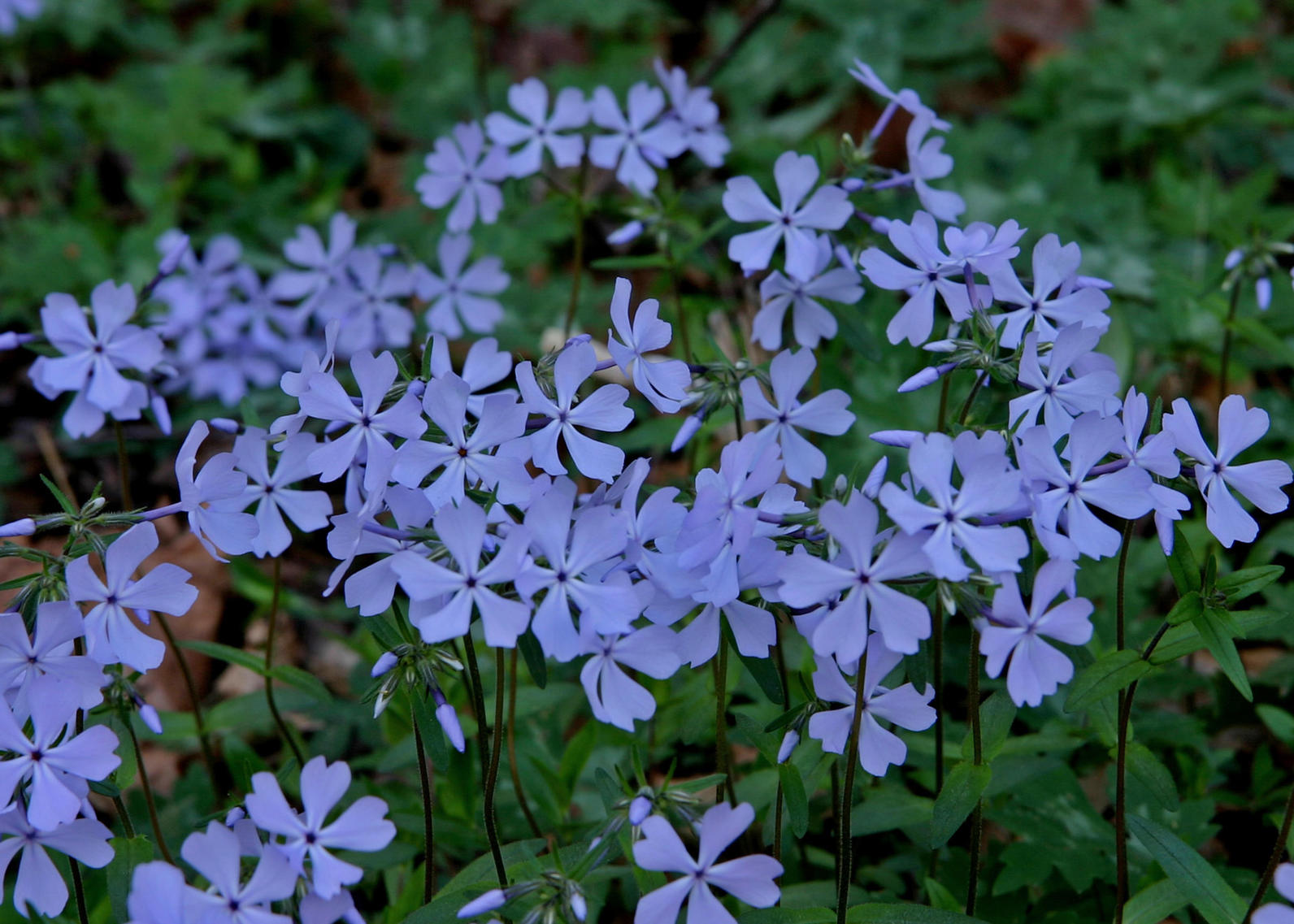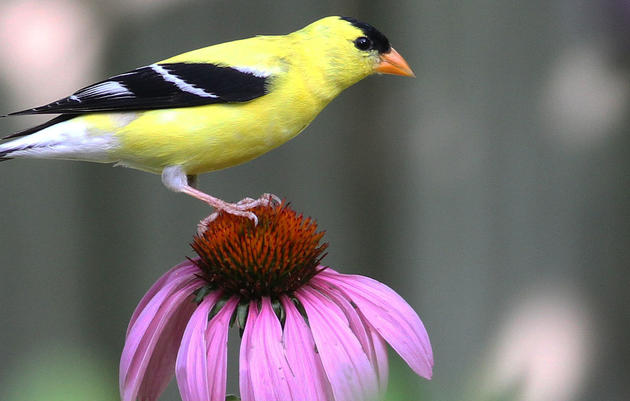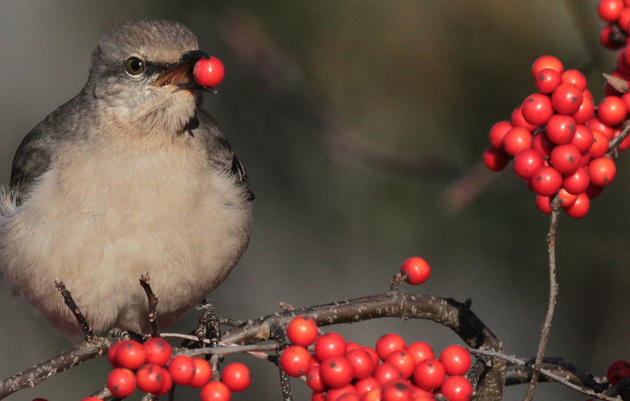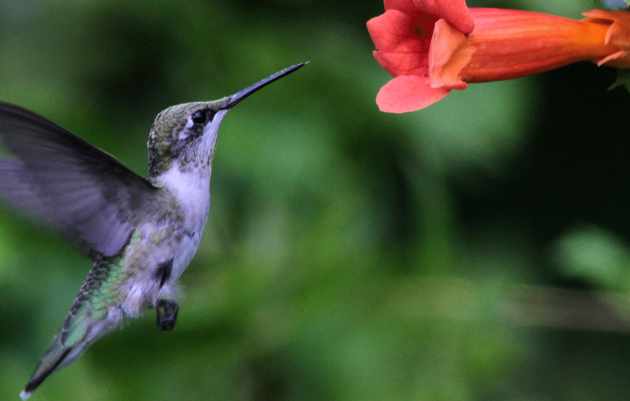Please welcome Audubon North Carolina’s Bird-Friendly Communities Coordinator Kim Brand. Launched in 2013, Audubon North Carolina’s Bird-Friendly Communities initiative is a partnership program involving more than 20 organizations with a vision for creating a more bird-friendly North Carolina. This vision statement guides the goals and projects of the group: “Bird-friendly communities give birds the opportunity to succeed by providing connected habitat dominated by native plants, minimizing threats posed by the built environment, and engaging people of all ages and backgrounds in stewardship of nature.”
The Plox is one of our Bird-Friendly Native Plants of the Year for 2015. Find this and other plants at your local participating retailer.
If you are looking for an evergreen ground cover that adds a burst of spring color to your garden, a sweet fragrance, and attracts hummingbirds on their way north in the spring, try Eastern Blue Phlox.
Eastern Blue Phlox, Phlox divaricata – also known as Woodland Phlox – is native to our NC mountains, piedmont, and coastal plain. It produces violet to lavender-blue flowers during April and May. Flower spikes can grow 1 to 2 feet tall. Find a spot in part sun to shade and moist soil. You’ll love the way Phlox makes your garden smell!
Watching your Phlox flowers can be very entertaining. Ruby-throated Hummingbirds are frequent visitors, as are hummingbird moths, so you’ll want to look closely to see who is visiting. Bees and butterflies also visit Phlox flowers for nectar.

Phlox is a staple of the woodland garden. It is long-lived and durable, making a nice carpet of evergreen leaves. And Phlox will coexist peacefully with other woodland wildflowers, like Trillium and Dutchman’s breeches (Dicentra cucullaria), so you can plan for a cascade of colorful flowers throughout the spring and early summer.
To extend your garden food web even further, plant native Viburnum to attract female Hummingbird Clearwings looking for places to lay their eggs. Viburnum is a preferred host plant for this moth species.
 This garden visitor will make you do a double-take – hummingbird or moth? It’s a Hummingbird Clearwing Moth (Hemaris thysbe).
This garden visitor will make you do a double-take – hummingbird or moth? It’s a Hummingbird Clearwing Moth (Hemaris thysbe).
Plox made our list of Bird-Friendly Native Plants of the Year for 2015. Find this and other plants at your local participating retailer.






